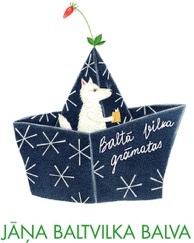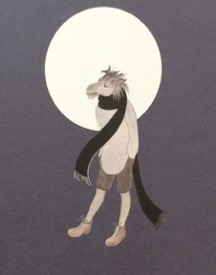Children’s Literature in Lativa

1. The publishing scene for young people in Latvia.
Around 17–20% of the published books are aimed at children. These include fiction and informative literature.
Number of titles and copies for children and young adults published each year
| Year | Number of titles | Number of copies |
| 2013 | 385 | 853,876 |
| 2014 | 361 | 744,106 |
| 2015 | 438 | 957,992 |
| 2016 | 409 | 767,426 |
Approximately 30–40% of the published books each year are translations: in 2016, 175 titles (from 409, i.e. 42.7%); in 2015, 128 titles (from 438, i.e. 29.2%).
Most are translated from English (UK/USA/Canada). In 2016, 59.43% and 54% in 2015. Other translations were mainly from the following countries (2016, 2015):
- Sweden (7.43% and 10.16% );
- Germany (6.86% and 11.72%):
- France (1.71% and 7%):
- Italy (5.14% and 2,34%);
- Russia (4% and 2,34%);
- Finland (1.71% and 3.91%);
- Lithuania (2.86% and 0.78%):
- Estonia (1.14% and 1.56%):
- Spain (2.86% in 2016):
- Ukraine (1.14% and 0.78%):
- The Netherlands (0.57 and 0.78%):
- Norway (0.57% and 0.78%):
- Czech Republic (1.56% in 2015):
- Hungary (1.56% in 2015):
- Denmark (0.78% in 2015):
- Ireland (0.57% in 2016):
- Poland (0.57% in 2016):
- Bulgaria (0.57% in 2016):
- Iceland (0.57% in 2016):
- Greece (0.57% in 2016):
- Uruguay (0.57% in 2016).
About 50% of new original Latvian children’s literature are fairy tales, fantasy and science fiction for young, middle-grade and young-adult readers. We have very few stories and novels depicting real life. This deficiency is compensated by many good translations.
The prosperity enjoyed by fantasy and science-fiction literature over the last five or six years in Latvian literature had become a widely discussed phenomenon. At present, 2013–2017, the number of Latvian original fantasy and science-fiction books continues to grow – altogether 29 works have been published, targeting a wide audience, from teenagers to adults.
Poetry for children is one of the basic types of Latvian children’s literature, both in the past and nowadays. In all times, writers for children have found poetic means appropriate for revealing the beauty, variety and complexity of the world.
2. Insight in the history of Latvian children’s literature.
In Latvia up until the middle of the nineteenth century, German publishers dominated. The publishing of books for children in Latvian became more popular only in the last decades of the nineteenth century, and before the First World War several publishing houses were established.
Latvia is one of the three Baltic countries and shares its historic fate with Estonia and Lithuania. During the inter-war period in the 1920s and 1930s all three Baltic nations had established independent states that both intellectually and physically belonged to Europe. The cultural and educational level of the Baltic States corresponded fully to European standards – in 1935 the number of literate people in the towns of Latvia had reached 94.06%, in the countryside, 85.02% and on average in Latvia the number of literate people was 88.85%. (Salnītis and Skujenieks, 1938, p.98). Book printing was a flourishing industry.
The movement of establishing libraries in the territory of Latvia started as part of the national awakening in the middle of the nineteenth century. In the 1920s and 1930s libraries functioned in all kinds of educational institutions: folk schools, vocational schools, secondary schools and universities.
The Soviet occupation and the Second World War put an end to the prosperity of the Baltic States. After the agreement signed between Nazi Germany and the Soviet Union about the zones of influence, Soviet troops entered the Baltic countries in June of 1940, and all three countries, under the pressure of the military power, joined the Soviet Union. The official Soviet claim was that the Baltic peoples ‘voluntarily’ consented to their incorporation into the USSR, and this became the legal basis for nearly five decades of Soviet rule (O’Connor, 2003, p.116).
Although the Soviet power implemented the policy of Russification, the Baltic nations made every effort to protect their national identity, language and culture. Culture became a collective form of resistance of the three small nations against the endeavours to dissolve their identity into the Soviet nation and culture dominated by the Russian people. The intelligentsia, including writers, took an important place in the public protests and frequently became figures of cult in the Baltic countries (Kestere and Stikāne, 2015, pp.47–50).
After the restoration of independence in 1991, the publishing sector was the first to be privatised. New publishing houses were founded, and the number of new titles has increased annually.
3. Reading promotion activities.
The most important reading promotion programme in Latvia is the Children’s and Young Adult Jury. It is a successful programme that purposefully consolidates government and municipally financial support for reading promotion.
Since 2001 when the Children’s and Young Adult Jury was created and implemented by the Children’s Literature Centre of the National Library of Latvia, the improvement in children’s literacy and the development of children’s literature in Latvia has been substantial. In the last five years this initiative has attracted 17,000–20,000 participants every year in Latvia and in Latvian community centres in other countries. The best and most exciting books are distributed to up to 700 libraries and Latvian centres abroad. The programme works according to simple, easy-to-understand principles – step by step involving its participants into reading, discussing and evaluating different books that develop their critical thinking, together with reading and writing skills. Every year professional experts choose the best books by Latvian authors and translations, and include these books in the collections of the programme for four age groups: 5+, 9+, 11+ and 15+. The participants have to read 6–7 books intended for their particular age group and give their evaluation, putting them in first, second and third place (Cielēna, 2015, pp.4, 40).

Both during the Soviet period and the 26 years of independence, poetry has been the genre of Latvian children’s literature, with the many published books and the richest content. Poetry also produced the most courageous and innovative books.
The giant of Latvian poetry Ojārs Vācietis (1933–1983) excelled in this particular genre, rising high above the limitations and restrictions of the Soviet time in which he lived, and inventing striking and inimitable modes of expression. From his poetry numerous unique characters have emerged, one of the most striking is the mysterious horse that sings at night, the symbol of freedom of a creative soul.
One of the poets who continued the traditions of folklore and classical poetry in revealing the closeness and ties between man and nature was Jānis Baltvilks (1944– 2003). His contribution is some 30 children’s books of poems, prose and non-fiction. The author’s live contact with readers and his collaboration with schools and libraries consolidated his image among readers. His family name ‘Baltais vilks’ – ‘White Wolf’ – has become a sort of totem in Latvian children’s literature. To preserve the outstanding poet’s memory and to promote children’s literature, the Baltic Sea Region Jānis Baltvilks International Prize in Children’s Literature and Book Art has been established (in 2005). Winners are now announced on 24 July, the birthday of the poet, and prizes are awarded to a writer, an illustrator, and a foreign writer and their translator of the work into Latvian.
Works cited
Cielēna, M. (ed) (2015) Lasi un vērtē! Lasīšanas veicināšanas programmas ‘Bērnu un jauniešu žūrija’ 15 gadu pieredze. [Read and assess! 15 years’ experience of the reading promotion programme ‘Children’s and Young Adult Jury’.] Rīga: Latvijas Nacionālā bibliotēka.
Kestere, I. and Stikāne, I. (2015) La letteratura per l’infanzia e per ragazzi in Lettonia dal 1945 a oggi. [Children’s literature in Latvia from 1945 to date.] In Avanzini, A. (ed). Linee europee di letteratura per l’infanzia. II. Germania, Irlanda, Lettonia, Olanda, Serbia. Milano: Franco Angeli.
O’Connor, K.(2003) The History of the Baltic States. Westport, CT: Greenwood Press. Salnītis, V. and Skujenieks, M.(1938) Statistique de la culture intellectuelle de Lettonie.
1918 – 1937. Rīga: Valsts statistikas pārvalde.
